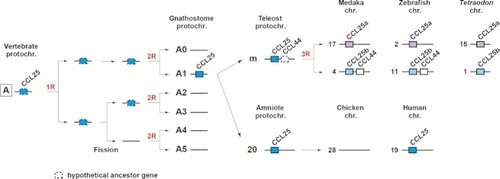Figure 4
- ID
- ZDB-FIG-190723-1923
- Publication
- Nomiyama et al., 2013 - Systematic classification of vertebrate chemokines based on conserved synteny and evolutionary history
- Other Figures
- All Figure Page
- Back to All Figure Page
|
Proposed ancestry of vertebrate chemokine |

